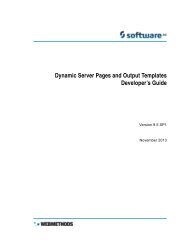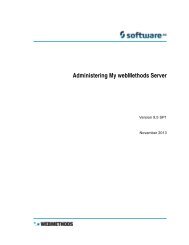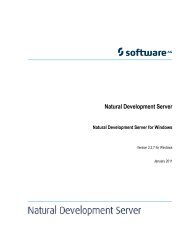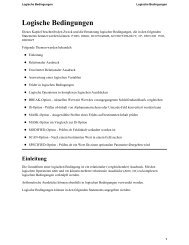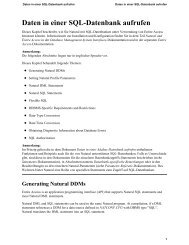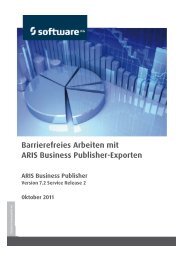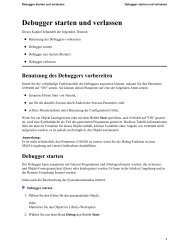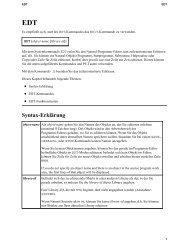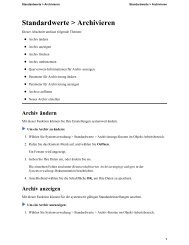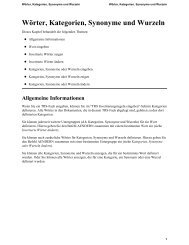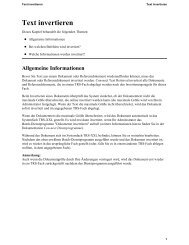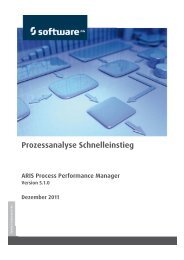Tamino XQuery User Guide - Software AG Documentation
Tamino XQuery User Guide - Software AG Documentation
Tamino XQuery User Guide - Software AG Documentation
You also want an ePaper? Increase the reach of your titles
YUMPU automatically turns print PDFs into web optimized ePapers that Google loves.
Text Retrieval<br />
declare namespace ino="http://namespaces.softwareag.com/tamino/response2"<br />
for $p in collection("ino:vocabulary")/ino:term<br />
where tf:containsText($p/ino:termName,tf:broaderTerms("dog"))<br />
return $p/ino:termName<br />
Here, the two ino:termName instances for dog and carnivore are returned.<br />
Pattern Matching<br />
You can conveniently perform text searches with the help of search patterns. <strong>Tamino</strong>'s text retrieval<br />
system allows for efficient queries using special characters that match one or more characters in<br />
a word. In <strong>Tamino</strong> <strong>XQuery</strong> the following functions support text search using pattern matching:<br />
tf:containsText<br />
tf:containsAdjacentText<br />
tf:containsNearText<br />
tf:createTextReference<br />
tf:createAdjacentTextReference<br />
tf:createNearTextReference<br />
The tokenizer that is being used determines the pattern matching facilities that are available. The<br />
following table gives an overview of the characters that have a special meaning when used in one<br />
of the above functions:<br />
Character<br />
Tokenizer Availability<br />
Effect<br />
? (maskcard)<br />
white space-separated match a single character in a word<br />
* (wildcard) CJK<br />
white space-separated<br />
match zero or more characters in a word<br />
\ (escapecard) white space-separated cancel the special meaning of the following character<br />
The default tokenizer ("white space-separated") supports all types of special characters, whereas<br />
the Japanese tokenizer only supports wildcard characters. The section Wildcard Characters<br />
provides details about the peculiarities when using the Japanese tokenizer.<br />
The table above shows the default settings. However, with the white space-separated tokenizer<br />
you can use a different character for each of these special characters. If, for example, your data<br />
frequently uses the asterisk sign as a regular character, it is more convenient to redefine the<br />
wildcard character instead of having to escape the asterisks using the escapecard character every<br />
time they occur. See the section Customizing Special Character Settings for information on how<br />
to change these settings. The discussion here assumes the default settings as defined in<br />
ino:transliteration and, if not stated otherwise, the usage of the standard white space-separated<br />
tokenizer.<br />
98<br />
<strong>XQuery</strong> <strong>User</strong> <strong>Guide</strong>



